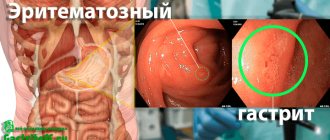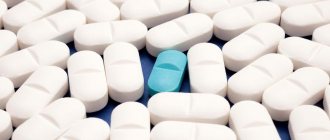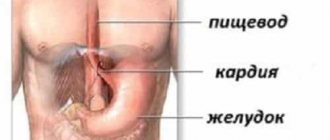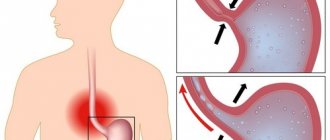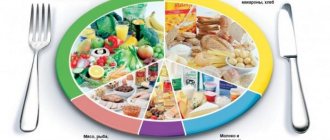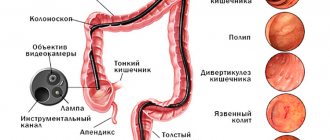The diet for mixed gastritis should be fractional, sparing the gastric mucosa chemically, thermally and mechanically. However, it has a number of features related to the fact that mixed gastritis is not one type of damage to the mucous membrane, but a combination of several forms of the inflammatory process caused by different reasons. At the same time, inflammatory, erosive and atrophic changes occur in the gastric mucosa.
Mixed gastritis: what is it?
This type of gastritis is a disease in which the patient experiences symptoms of several types of illness. The most pronounced are hemorrhagic, erosive and hypertrophic lesions of the mucous membrane. The disease is quite difficult to treat, since it will require a comprehensive examination, laboratory diagnostics of the digestive organs and the use of a considerable number of medications.
Knowing what it is - mixed gastritis, you should not immediately start treatment. The first step is to determine the type of disease. Existing forms of gastritis:
- Chronic. This form is the main reason for late diagnosis and treatment of any other form of the disease. Mixed chronic gastritis is very difficult to cure. It quite often makes itself felt throughout a person’s life, progressing in the spring or autumn seasons. If the chronic form of the disease is not treated, inflammatory processes may develop that disrupt the functioning of the stomach and intestines.
- Surface. This form is recognized as the most common. Mixed superficial gastritis can appear in both adults and children. During treatment, a gastroscopy of the stomach is required and medications are prescribed. At the initial stage, the disease is easily treatable.
- Atrophic. The third form of mixed gastritis is manifested by erosive changes directly on the gastric mucosa. At the same time, individual cells die, producing secretions and not having the ability to recover. With such a lesion, the organ is deprived of its basic functions, and this disrupts the normal functioning of the digestive organs.
Now it is clear what mixed gastritis is and what forms it exists. It is worth noting that any form of the disease is manifested by pain, heartburn, regular belching and loss of appetite.
Mixed gastritis: how to recognize and treat pathology
Mixed gastritis is an ambiguous form of the disease, in which the symptoms and processes of different types of inflammation of the stomach are combined.
This type of disease deserves special attention because it is very difficult to choose a treatment for it - while eliminating some symptoms, doctors are faced with the manifestation of signs of another form.
Mixed gastritis, the symptoms and treatment of which often change and require adjustment, can occur in any person.
How to make a diagnosis
First, a patient with unpleasant symptoms consults a gastroenterologist. In some clinics, the first thing they do is visit a therapist to get a referral to a specialized specialist. In private clinics, as a rule, this approach is not required.
At the appointment, the doctor conducts an initial examination, learns from the patient about the time of onset of symptoms and previous factors. Be sure to draw up a picture of existing chronic diseases. However, only an instrumental examination with histological analysis (tissue sampling for subsequent biopsy) provides a complete picture of the disease.
The main examination method is FGDS. This is a procedure involving immersion of a special probe into the stomach through the oral cavity. A miniature camera shows the condition of the mucous membrane. Additionally prescribed:
- blood chemistry;
- submitting stool to determine bacteria;
- breath test to determine the presence of Helicobacter pylori;
- analysis of urine and gastric juice.
Only on the basis of all the described tests and examinations can an accurate and reliable diagnosis be made for further treatment.
Treatment tactics for mixed gastritis
The goal of treatment for the disease is to restore the mucous membrane and eliminate harmful factors that provoke gastritis. To do this, it is important to adhere to an integrated approach to treatment: take medications and follow a diet during an exacerbation, as well as use approved folk remedies and undergo physiotherapeutic procedures.
Medicines for the treatment of gastritis
Drug treatment is carried out very carefully, especially in the presence of a dosage form of gastritis (caused by drugs):
- Antacids . Used to normalize acidity in the stomach.
- Anti-inflammatory drugs . Used for severe forms, but only in the absence of contraindications.
- Antispasmodics . Helps get rid of discomfort and pain of moderate intensity.
- Antibiotics . Used only if bacteria causing mixed gastritis are detected.
- Enzyme preparations . Prescribed by a doctor to restore stomach functions if they are lost due to disruption of the digestive glands.
There are other drugs that fall into the category of potent medications. They are used in courses and are most often sold by prescription.
Principles of dietary nutrition for mixed gastritis
A balanced menu with the exclusion of dangerous and harmful foods is necessary to restore the stomach. Only with the right diet, the necessary conditions are created for the regeneration of the gastric mucosa.
Important! Treatment table No. 1 (form A and B), developed by Dr. Pevzner, is prescribed. These diet options are used for high acidity. And table No. 2 is used to treat hypoacid gastritis - with low acidity.
Principles of diet for high stomach acidity:
- only warm food, excluding hot and cold dishes;
- absence of traumatic factors - food should be pureed;
- exclusion from the diet of soda, sweets, fatty foods and processed foods;
- minimizing salt – up to 8 g per day;
- the products are boiled or steamed, they can be baked, but without forming a fried crust;
- eat small portions 5-6 times a day, and drink milk at night if there is no intolerance.
For gastritis with high acidity, it is useful to drink Borjomi water.
Ground porridge in water, slimy soups, lean cooked chicken and rabbit meat, as well as lean fish and vegetable broths are the basis of the diet . Gradually, freshly squeezed cabbage juice and jelly from non-acidic fruits and berries are added to the food. For high acidity, after relieving acute symptoms, it is recommended in small quantities: homemade jam, marmalade, honey, marshmallows.
If with mixed gastritis the secretory function is reduced, then table No. 2 is used in cases of exacerbation (hereinafter referred to as table No. 15):
- there are no strict restrictions on the consistency of food;
- you can eat breaded fried cutlets and chops (without oil) 2-3 times a week;
- There are no restrictions on fresh vegetables and fruits, but it is better to give preference to root vegetables, spinach, dried fruit compotes, and rosehip decoction.
During the period of remission for both forms of gastritis, you can eat according to the usual diet with the exception of salty, fatty, spicy and fried foods.
Physiotherapy for mixed gastritis
Physiotherapeutic procedures are most often carried out for the chronic form of mixed gastritis in remission. There are many methods, and each of them is analyzed by a doctor before being prescribed:
- Immunomodulation . Thermal low-frequency action of SMV, magnetic therapy of the thymus, and laser quantum irradiation are prescribed.
- Magnetotherapy . A targeted effect on the gastric mucosa improves the condition of capillaries, metabolism, and microcirculation. Reduces tissue swelling and initiates regeneration.
- Ultrasound . Helps fight chronic pain.
- Vegetation techniques . This category includes treatment methods aimed at improving the functioning of the brain and central nervous system (aerotherapy, electrical stimulation).
- Cryotherapy . Exposure to temperatures relieves pain, swelling, activates the immune system and other positive processes.
- UHF . The mild effect of the electric field is shown even during exacerbations.
Treatments with therapeutic mud are effective in the treatment of mixed gastritis: in the form of baths, applications.
Folk remedies for treatment
When choosing alternative methods of treatment, the patient should be guided by the advice and recommendations of the doctor in the same way as with medication therapy. Natural compounds are so potent that if used incorrectly, they cause a sharp exacerbation of mixed gastritis .
It is necessary to remember that folk remedies are taken according to the established scheme - strictly without omissions. The specificity of therapy with natural compounds is that they have a cumulative effect, and the result of treatment can be replaced only 1-2 months after the start of therapy.
The most popular and affordable remedies for stomach restoration:
- Honey _ Relieves pain, inflammation, destroys bacteria. It is used as an independent medicine, or together with other ingredients - added to herbal infusion, mixed with medicinal oils and juices. A recipe with honey, aloe juice and butter works effectively (for high acidity).
- Medicinal decoctions with calendula, plantain, St. John's wort and wormwood . One of the most effective recipes: take 10 g of herbs, mix, pour 1 tbsp. l. 500 ml of boiling water and leave for 15 minutes. It should be consumed after discussion with your doctor.
- Potato juice . The product has a complex effect - reduces acidity, eliminates heartburn and nausea. You only need to take the fresh substance – 30 minutes before meals.
- Medicinal tea made from mint, plantain and calamus . Brew 1 tbsp in 0.5 liters of boiling water. l. mixture of 1 tbsp. l. mint leaves, 50 g plantain and 1 tsp. caraway seeds. The product must be infused for at least 10 hours.
- Motherwort juice . A freshly squeezed medicinal cocktail is used. It is taken before meals up to 3 times a day, 1 tsp.
- Propolis tincture . Used to treat gastritis with different levels of acidity. If there is increased secretion of gastric juice, mix homemade tincture with milk. You can prepare it yourself by pouring 50 g of propolis with 0.5 liters of vodka or alcohol. Various recipes are prepared based on propolis tincture, including with other herbs and oil.
Doctors often recommend sea buckthorn oil for gastritis, which protects the stomach and saturates the body with vitamins. But the method of its use depends on the acidity level. If the content of gastric juice is low, you can consume products based on fresh sea buckthorn - teas, fruit drinks.
The mixed form of gastritis occurs with different symptoms.
The disease can affect the upper mucous membrane with minor erosions, occur in the form of atrophic gastritis with low or high acidity, cover the entire organ or affect only certain parts of it, for example, the antrum.
The confusion of clinical signs and symptoms sometimes makes diagnosis difficult. But after a complete diagnosis, experienced specialists manage to get to the essence of the disease. And then a complex treatment is prescribed, which the patient must adhere to without fail.
Source: https://gastritoff.ru/gastrit/smeshannyj-gastrit.html
Causes
Experts identify a number of reasons for the appearance and development of gastritis. Quite often, complications occur due to a negligent attitude towards one’s own health, as well as ignoring the first signs of the development of the disease. The main signs of the appearance of mixed gastritis are:
- violation of food culture rules, frequent consumption of carbonated drinks;
- infection of the body with the bacterium Helicobacter pylori, which affects the mucous membrane and internal walls of the stomach, causing erosive changes;
- abuse of tobacco products and alcoholic beverages;
- stress, neuroses;
- burn lesions of the gastric mucosa;
- taking medications that negatively affect the epithelium of the internal organs of the gastrointestinal tract.
Causes of infection
The disease is caused by Helicobacter - microbes that can cause a variety of stomach diseases. Infection occurs in various ways - sometimes it is enough just to come into contact with a carrier of pathogenic flora in order to get sick. Lack of personal hygiene especially contributes to infection.
The reasons for the development of mixed gastritis lie in:
- lack of personal hygiene;
- eating too cold or hot food;
- mechanical damage to the digestive organs;
- the use of certain medications;
- alcohol abuse;
- smoking.
Bacterium pylorus disrupts the level of acidity in the stomach, resulting in damage to the mucous membrane. The disease then develops into a chronic form. It is necessary to pay special attention to the appearance of pain, frequent heartburn and stool disorders. Initially, the symptoms of the disease are not intense.
Manifestation
At the initial stage of the disease, patients experience the following symptoms:
- loss of appetite;
- abdominal pain (most often after eating);
- belching with a sour taste;
- strong gas formation;
- painful colic.
If treatment is not started in a timely manner, the symptoms of mixed gastritis will be more pronounced:
- dull pain in the stomach;
- weakness;
- nausea;
- intestinal disorder;
- frequent constipation;
- sudden weight loss;
- problems with digesting food;
- the appearance of stagnation in the intestines and stomach.
Gastritis: treatment with folk remedies and diet
If you have gastritis, comprehensive treatment will be required.
If the patient suffers from severe pain, the doctor prescribes medications to relieve spasms. At the initial stage, it is quite possible to get by with folk remedies and diet. There are many treatments for gastritis. Let's look at the most effective ones.
If the patient has no contraindications to the use of propolis, then from this
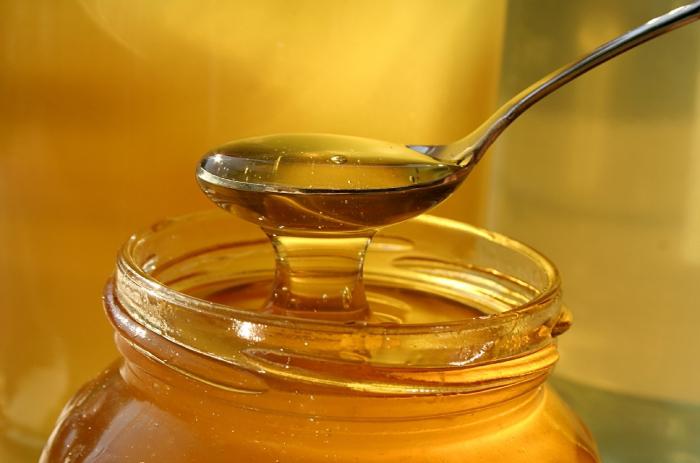
Mix potato juice with propolis honey. Take in the same way as in the previous method.
Grind and mix chamomile, St. John's wort and yarrow. Take a tablespoon of the resulting mixture, pour boiling water and leave to steam for two hours. Strain. Take the dose received one time before meals.
If the patient has ulcerative gastritis, treatment will consist of a mixture of honey and aloe juice. This remedy relieves pain and effectively restores the walls of the stomach, eliminating inflammation.
Diet for low stomach acidity
If the secretion of gastric juice is reduced, then the patient is recommended to consume vegetable and cereal soups, which can only be cooked in broth made from lean meat. Rabbit, turkey, veal, and pink salmon are acceptable for consumption. Stale bread, dairy products (not sour), boiled and fresh vegetables (except tomatoes), fruits, cereals, eggs, coffee, cocoa, tea are allowed. In order for gastritis, the treatment of which must certainly be supported by diet, to be successfully overcome, you need to drink weak and warm drinks. You can cook compote, fruit juice and jelly from sweet berries.
Diet for high stomach acidity
In this case, the diet should be aimed at reducing the level of gastric juice secretion. To do this, you should eat fresh dairy products, yogurt, cottage cheese, eggs, fish and boiled lean meat. Anything can be done from vegetables, but they must first be boiled and pureed. You can add fresh herbs to the dish - lettuce, dill and green onions. Sunflower oil, vermicelli, porridge, tea, coffee are allowed. Allowed as sweet dishes
What gastritis does not tolerate
Treatment should include not only the consumption of certain foods, but also a ban on the introduction of prohibited foods to the menu. These include alcohol, fresh bread and flour products, beans, lentils, fatty fish and meat, fried foods, cabbage, onions, hard cheeses, chocolate, and fatty sour cream. There is also mixed gastritis, the treatment of which is more difficult; it requires excluding fresh sour fruits from the diet. By following the rules of the diet, you can forget about the painful symptoms of gastritis.
Diagnostics
Before starting treatment, the doctor directs the patient to the necessary diagnostic measures. First of all, the doctor listens to all the patient’s complaints and palpates the abdominal cavity. After this, a blood test is taken, as well as stool and urine tests. If necessary, gastroscopy of the stomach is performed.
Ultrasound examination helps to see how the stomach works at the moment. If pathologies are suspected, the patient is sent for an X-ray examination and MRI of the stomach. All these diagnostic studies require special preparation, with which a gastroenterologist will assist.
Symptoms
So, a person may complain of feeling weak for no reason. Sometimes there are gastric disorders that are not associated with eating poor quality food, bloating and heartburn. Belching has a bitter or rotten taste. The patient complains of a lack of appetite, which he associates with an overload of the nervous system, with anything but a stomach disease. From time to time there are pains that are localized specifically in the stomach area. If you notice such symptoms, consult a doctor immediately.
The patient’s language can tell a specialist a lot. With this form of gastritis, it is often covered with a white coating. Even if it is not there, the surface of the tongue will be smooth, which is not typical for a healthy person. This also happens to the stomach: the folded surface of the mucous membrane becomes as if polished.
Drug treatment of mixed gastritis
If the test results reveal the presence of the bacterium Helicobacter pylori, the treatment process begins with a full course of antibiotics (Klabaks, Klacid). If there is pain, the patient is prescribed painkillers that eliminate spasms (Buscopan, No-Shpa). During treatment of the disease, it is necessary to improve the secretory function of the stomach, as well as reduce the production of gastric juice, which provokes the development of erosive and inflammatory processes. For this, the drugs Omeprazole or Venter are most often used.
Treatment of mixed gastritis is not complete without antacid drugs, which have enveloping properties that help neutralize secretions and protect the inflamed gastric mucosa from the effects of acids. These medications include Rennie, Maalox, and Phosphalugel. In order to eliminate erosive wounds, astringents (De-nol, Vikair) are used.
Treatment of gastritis with high acidity
The main goal of therapy for gastritis and stomach ulcers is to achieve the destruction of Helicobacter pylori, eliminate the symptoms of pain and heartburn, and reduce stomach acidity.
A set of herbs from yarrow, St. John's wort and mint helps well with heartburn. Mix in equal proportions and pour boiling water. The infusion is taken orally before meals.
Licorice root treats cough and aggravated gastritis. Grind it, brew it with boiling water and consume a tablespoon daily before meals. The decoction retains its properties when stored in the refrigerator.
For gastritis and stomach ulcers, potato juice helps reduce acidity. Vegetables should be peeled, grated, squeezed out the juice through cheesecloth and taken in the morning before meals. Treatment is carried out for 2 weeks.
A good folk remedy for treating gastritis is honey. This is a rare product prescribed for gastritis with varying acidity. Honey promotes healing of the mucous membrane and normalizes the production of hydrochloric acid. For a therapeutic effect, a tablespoon dissolved in a glass of warm water is enough.
ethnoscience
If you want to speed up the healing process, you can use traditional medicine along with medications. To solve problems with gastritis with high acidity, potato juice has proven itself to be effective, not only having an enveloping effect, but also eliminating inflammatory processes. In addition, this remedy remarkably normalizes the secretion of hydrochloric acid. To prepare, you will need to take several potato tubers, make a cake out of them and squeeze out the juice. It must be taken 2 tablespoons before each meal.
Mixed gastritis is also an excellent treatment for a mixture of honey and aloe. To prepare this remedy at home, you need to take these components in a 1:1 ratio and mix with a small amount of butter. It is also recommended to take it before each meal, but 1 tablespoon.
Treatment of gastritis with low acidity
Treatment of gastritis with low acidity is carried out with drugs that stimulate the gastric mucosa and promote its healing.
Medicinal herbs are widely used to treat gastritis at home.
The most effective folk remedy for low acidity is plantain. There are several folk recipes. A decoction of plantain juice is mixed with honey and taken daily, one tablespoon three times a day. Plantain tincture is prepared with alcohol or poured with vodka, then allowed to brew for a week and taken one teaspoon three times a day.
Calamus root helps get rid of gastritis. The crushed plant is poured with boiling water and allowed to brew, then take 1/2 cup 30 minutes before meals.
You can cure gastritis with the help of centaury herb. The herb must be crushed, pour boiling water and boil for 15 minutes. Leave for half an hour, strain and take a tablespoon orally before meals.
Burdock root and oats are good for increasing stomach acidity. They are taken as a tincture 30 minutes before meals.
Treatment of gastritis with folk remedies often includes berries and fruits.
- A decoction of rose hips will help reduce the production of hydrochloric acid in the stomach. Should be taken before meals.
- Sea buckthorn berries, from which decoctions and fruit drinks are made, help well with gastritis of the stomach.
- To treat gastritis, apricots are used, eaten fresh or dried, or drink apricot juice.
- Grapes help increase acidity; it is recommended to eat them 30 minutes before meals. You are allowed to consume 150 grams of fresh berries per day.
- Blueberries and lingonberries stimulate the production of hydrochloric acid in the stomach.
Diet
Therapeutic nutrition for mixed gastritis is a must in the process of eliminating the disease. The diet excludes foods that provoke irritation of the gastric mucosa, as well as its inflammation. A special diet must be strictly followed, otherwise healing of the damaged mucosa will take a very long time. In this case, you should pay attention to prohibited and permitted food products.
During the treatment of gastritis, it is strictly forbidden to consume:
- spicy and overly salty dishes;
- fast food;
- chemical impurities;
- preservatives;
- baked goods;
- confectionery;
- garlic;
- spices;
- sweet sparkling water;
- fresh white bread;
- any alcoholic drinks;
- tea;
- coffee;
- sour fruits and vegetables.
Many people are scared by this list, because it immediately seems that they can’t eat anything at all. In fact, there are a number of permitted foods that can also saturate your body well. These include:
- lean meat;
- fish;
- vegetables and fruits (preferably eaten baked);
- plant foods that do not cause strong production of hydrochloric acid;
- olive and sunflower oil in minimal quantities;
- cottage cheese;
- sour cream;
- cream;
- milk.
Authorized Products
Therapeutic nutrition for mixed chronic gastritis with normal/high acidity involves the inclusion in the diet of:
- Not fried soups with vegetable broth/potato broth with the addition of pureed vegetables, boiled cereals (buckwheat, semolina) or white rice, seasoned with low-fat cream/garden herbs/butter. Or cream soups with the addition of thoroughly pureed chicken meat and whipped with a blender to the consistency of puree soup.
- Boiled/steamed chicken/turkey meat without skin, tongue and beef liver, lean beef. After pre-boiling the meat, it can be baked in the oven.
- Low-fat types of white fish in the form of cutlets, meatballs, meatballs, zraz.
- Dairy products (fresh cottage cheese, milk and low-fat cream, mild grated cheese, sour cream and curdled milk), low-fat herring, chicken eggs in the form of a steamed omelet/soft-boiled, low-fat ham, liver pate, milk sausage, jellied fish.
- Stale (yesterday's) wheat/dried bread, biscuits.
- Rice, semolina, buckwheat/oatmeal, noodles or pasta as a side dish.
- Vegetables (young peas, cauliflower, beets, potatoes, carrots), boiled, pureed. Butter/vegetable oil - only for ready-made dishes.
- Sweet berries/fruits in boiled and baked form - jelly, compotes, purees, jelly, marshmallows, non-sour jam, marshmallows.
- Fruit juices from permitted fruits, rosehip decoction, weak coffee/tea with milk, mineral water.
Table of permitted products
| Proteins, g | Fats, g | Carbohydrates, g | Calories, kcal | |
Vegetables and greens | ||||
| zucchini | 0,6 | 0,3 | 4,6 | 24 |
| cauliflower | 2,5 | 0,3 | 5,4 | 30 |
| potato | 2,0 | 0,4 | 18,1 | 80 |
| carrot | 1,3 | 0,1 | 6,9 | 32 |
| beet | 1,5 | 0,1 | 8,8 | 40 |
| pumpkin | 1,3 | 0,3 | 7,7 | 28 |
Fruits | ||||
| apricots | 0,9 | 0,1 | 10,8 | 41 |
| watermelon | 0,6 | 0,1 | 5,8 | 25 |
| bananas | 1,5 | 0,2 | 21,8 | 95 |
| melon | 0,6 | 0,3 | 7,4 | 33 |
| nectarine | 0,9 | 0,2 | 11,8 | 48 |
| peaches | 0,9 | 0,1 | 11,3 | 46 |
| apples | 0,4 | 0,4 | 9,8 | 47 |
Berries | ||||
| strawberry | 0,8 | 0,4 | 7,5 | 41 |
| raspberries | 0,8 | 0,5 | 8,3 | 46 |
Cereals and porridges | ||||
| buckwheat (kernel) | 12,6 | 3,3 | 62,1 | 313 |
| semolina | 10,3 | 1,0 | 73,3 | 328 |
| cereals | 11,9 | 7,2 | 69,3 | 366 |
| white rice | 6,7 | 0,7 | 78,9 | 344 |
Bakery products | ||||
| white bread crackers | 11,2 | 1,4 | 72,2 | 331 |
Confectionery | ||||
| jam | 0,3 | 0,2 | 63,0 | 263 |
| jelly | 2,7 | 0,0 | 17,9 | 79 |
| marshmallows | 0,8 | 0,0 | 78,5 | 304 |
| paste | 0,5 | 0,0 | 80,8 | 310 |
Raw materials and seasonings | ||||
| honey | 0,8 | 0,0 | 81,5 | 329 |
| sugar | 0,0 | 0,0 | 99,7 | 398 |
| milk sauce | 2,0 | 7,1 | 5,2 | 84 |
Dairy | ||||
| milk | 3,2 | 3,6 | 4,8 | 64 |
| cream | 2,8 | 20,0 | 3,7 | 205 |
| sour cream | 2,8 | 20,0 | 3,2 | 206 |
Meat products | ||||
| boiled beef | 25,8 | 16,8 | 0,0 | 254 |
| beef liver | 17,4 | 3,1 | 0,0 | 98 |
| boiled beef tongue | 23,9 | 15,0 | 0,0 | 231 |
| boiled veal | 30,7 | 0,9 | 0,0 | 131 |
| rabbit | 21,0 | 8,0 | 0,0 | 156 |
Bird | ||||
| boiled chicken | 25,2 | 7,4 | 0,0 | 170 |
| turkey | 19,2 | 0,7 | 0,0 | 84 |
Eggs | ||||
| chicken eggs | 12,7 | 10,9 | 0,7 | 157 |
Fish and seafood | ||||
| black caviar | 28,0 | 9,7 | 0,0 | 203 |
| salmon caviar granular | 32,0 | 15,0 | 0,0 | 263 |
Oils and fats | ||||
| butter | 0,5 | 82,5 | 0,8 | 748 |
| ghee | 0,2 | 99,0 | 0,0 | 892 |
Non-alcoholic drinks | ||||
| mineral water | 0,0 | 0,0 | 0,0 | — |
| coffee with milk and sugar | 0,7 | 1,0 | 11,2 | 58 |
| black tea with milk and sugar | 0,7 | 0,8 | 8,2 | 43 |
Juices and compotes | ||||
| apricot juice | 0,9 | 0,1 | 9,0 | 38 |
| jelly | 0,2 | 0,0 | 16,7 | 68 |
| pumpkin juice | 0,0 | 0,0 | 9,0 | 38 |
| rose hip juice | 0,1 | 0,0 | 17,6 | 70 |
| * data is per 100 g of product | ||||
Daily menu
The ideal menu that you can eat for several days in a row without problems is:
- breakfast - oatmeal cooked in water with milk, a sandwich of cheese and rye bread, green tea;
- second breakfast - a glass of apple juice and a fresh banana;
- lunch - creamy soup with meatballs, a couple of rye crackers, tea with bagels;
- afternoon snack - milk jelly with sweet crackers;
- dinner - buckwheat with steamed cutlet and fresh salad, cottage cheese casserole and tea.
The size of the portions does not matter, since the goal of the diet is to treat the disease, not to lose weight, so you should not torture yourself with hunger and worsen your condition.
It is better not to eat before going to bed, but if you still want to satisfy your hunger, then a couple of hours before bedtime you are allowed to drink a glass of kefir or fermented baked milk. Fat content in this case does not play a special role.
Description
Doctors constantly warn that any problems with the gastrointestinal tract should be treated on time. If you are worried about bloating, belching, or pain before or after eating, then put everything aside and go see a doctor. In the early stages, all diseases are much easier to treat. Superficial gastritis is no exception. Atrophic gastritis never occurs suddenly. This is a form of chronic disease that lasts a long time in a patient who does not receive proper treatment. In fact, this is not even a clinical diagnosis, but rather a morphological one.
Diagnosis of the disease
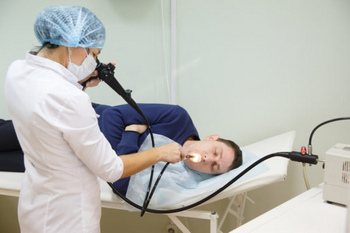
If there are complaints, the patient must undergo fibrogastroduodenoscopy - a special endoscopic examination, during which the doctor identifies absolutely all pathological processes in the gastric mucosa.
During an FGDS, the doctor performs a biopsy - taking material for analysis. The results of laboratory analysis will be the basis for an accurate diagnosis.
FGDS is not the only method. To correctly interpret the diagnosis, use:
- Questioning and visual examination of the patient, taking an anamnesis.
- Collection of clinical urine and blood tests.
- pH is a meter for determining the acidity of gastric juice.
- Ultrasound of the abdominal cavity to identify concomitant pathologies of the gallbladder, pancreas, and liver.
- X-ray of the stomach with contrast. This method helps to exclude the presence of tumors, intestinal obstruction and other diseases.
A detailed analysis of all results, compliance with the clinical picture and the patient’s complaints will be the basis for making an accurate diagnosis.
Without treatment
A simple inflammatory process in the absence of necessary treatment leads to the development of chronic superficial atrophic gastritis. This is already a complex disease that puts all other parts of the digestive system at risk. Because food is not properly processed with juices and enzymes, it cannot be absorbed effectively in the intestines. Rotting processes begin, which leads to bloating and pain. Decay products enter the bloodstream and poison the liver and kidneys. The prolonged presence of this form of the disease in humans and the lack of proper treatment leads to the development of cholecystitis and pancreatitis. All together, these disorders lead to severe pain syndrome, which can no longer be ignored.



